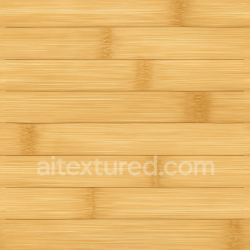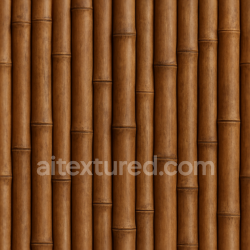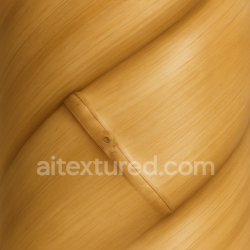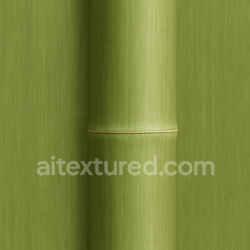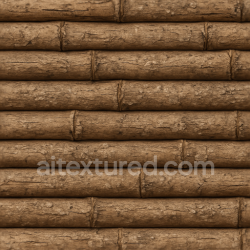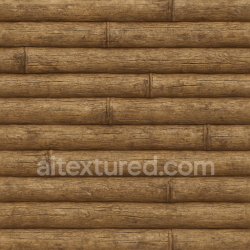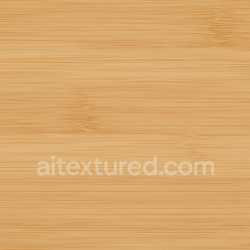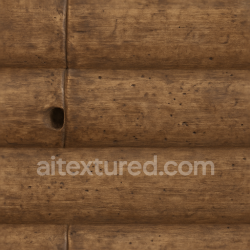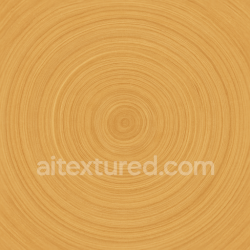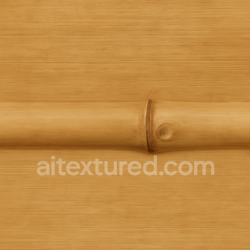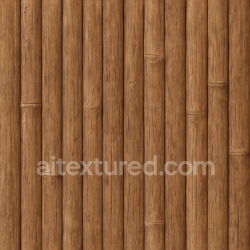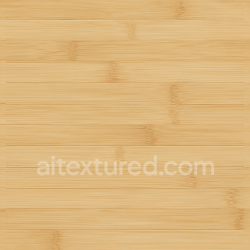Mastering Seamless PBR Fire Textures for Realistic 3D Flame Effects
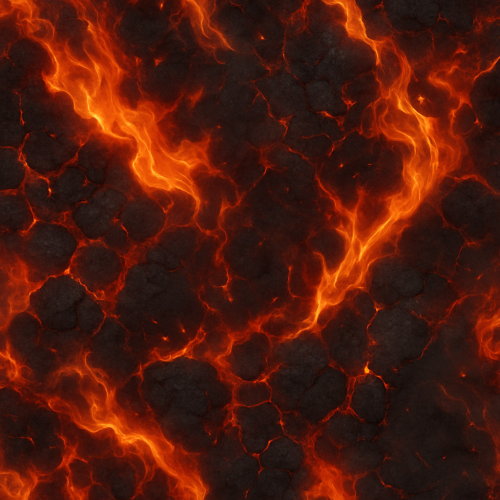
Acquiring high-fidelity reference data for fire textures in physically based rendering (PBR) workflows presents unique challenges due to the ephemeral and dynamic nature of flames, embers, burnt wood, and smoke. Unlike static materials such as stone or metal, fire-related surfaces are transient, with evolving color, opacity, and structural characteristics that directly influence their optical response. To achieve accurate and physically plausible fire textures, especially those intended for close-up or interactive environments in engines like Unreal Engine or Blender, the initial capture of reference data must be approached with meticulous attention to both the physical phenomena and the constraints of photogrammetry and scanning techniques.
The foundation of any PBR texture lies in the accurate acquisition of albedo (base color), roughness, normal, ambient occlusion (AO), height, and metallic maps. For fire textures, the metallic channel is generally negligible except in cases involving charred metals or specific combustion residues; thus, emphasis is placed on the other channels. Photogrammetry remains the primary method for capturing the intricate details of burnt wood and embers. This process involves photographing the target material from multiple angles under controlled lighting conditions to reconstruct its three-dimensional geometry and surface appearance. However, capturing active flames with photogrammetry is inherently impractical due to their constant motion and transparency. Instead, reference acquisition for fire itself relies on high-resolution imaging techniques and specialized scanning for smoke and embers.
When capturing embers and burnt wood, the key is to maintain consistent and diffuse lighting to avoid harsh shadows that can distort the perceived roughness and albedo. Using a light tent or dome with calibrated color temperature lamps ensures neutral illumination, preserving color accuracy critical for albedo maps. Multiple passes under different lighting angles allow for the extraction of detailed normal and height information through photometric stereo techniques, which enhance the fidelity of surface micro-variations. These subtle variations in surface topology are vital for realistic light scattering and specular highlights, especially in PBR workflows where roughness maps modulate microfacet distribution.
To capture the nuanced color gradations and surface properties of embers, it is advisable to photograph under both daylight and controlled tungsten lighting. Daylight captures offer accurate color rendition, while tungsten light emphasizes emissive features and subtle variations in charred textures. High dynamic range (HDR) imaging is beneficial here to preserve details in both bright and shadowed regions without clipping, which is critical for subsequent calibration of albedo values. The collected images undergo color calibration using standardized color charts (e.g., X-Rite ColorChecker) to ensure linearity and consistency across all texture maps, a crucial step to maintain physical plausibility when these textures are integrated into PBR shading models.
Capturing active flames and smoke requires an alternative approach since photogrammetry and traditional scanning cannot handle translucent, volumetric, and rapidly changing phenomena. High-speed photography combined with multi-spectral imaging provides detailed reference frames that capture flame shape, color gradients, and flicker patterns. These images, while not directly convertible into traditional texture maps, serve as critical reference for authoring emissive maps and animated opacity masks in texture authoring software. Furthermore, volumetric scanning techniques such as laser-induced fluorescence and structured light can be employed in controlled laboratory settings to map smoke density and particle distribution, offering invaluable data for crafting realistic smoke textures and volumetric shaders.
For the authoring phase, converting these references into usable PBR textures entails several technical considerations. Albedo maps must be carefully desaturated from emissive glow to avoid over-brightening, as the color perceived in flames often contains high-intensity emission that does not translate directly into surface reflectance. Instead, emissive components are isolated into separate emission maps or shader parameters within the engine. The roughness maps derived from burnt wood and embers often require manual refinement to balance between glossiness and diffuse scattering, ensuring that the textures respond correctly to dynamic lighting. Procedural noise and micro-variation layers can be overlaid to enhance tiling and prevent repetitive patterns, which is especially important for large surfaces such as charred logs or scorched terrain.
Normal and height maps generated from photogrammetric reconstructions benefit from additional hand-painted detail to accentuate fine cracks, blistering, and ash deposits, which may be too subtle for automated extraction. These height variations contribute to parallax occlusion effects or tessellation displacement in real-time engines like Unreal Engine, enhancing immersion without exorbitant geometry costs. Ambient occlusion maps, often baked from the 3D model, must be carefully balanced to avoid excessive darkening of emissive areas, which can conflict with the natural glow of embers and residual heat effects.
Optimization is critical when integrating fire textures into real-time applications. Emissive maps, for example, should be encoded with gamma correction to preserve visual fidelity under varied exposure settings. Mipmapping strategies must consider the loss of detail in emissive and opacity channels to prevent flickering or pop-in artifacts at different viewing distances. Texture atlasing and channel packing—where roughness, metallic, and ambient occlusion maps are combined into single textures—help reduce draw calls and memory usage without sacrificing quality. Additionally, leveraging engine-specific features such as Unreal Engine’s subsurface scattering and dynamic global illumination can amplify the realism of fire-related materials when paired with accurately authored PBR textures.
Calibration between reference acquisition and engine rendering is paramount. Color space conversions, linear workflow adherence, and matching the physical units of reflectance and emission ensure that the textures behave predictably under engine lighting. Regularly comparing rendered textures against captured reference photos in the target environment aids in refining texture parameters and shader settings. Blender’s Eevee and Cycles rendering engines, with their material preview capabilities, serve as excellent intermediate platforms for testing texture maps before engine deployment. Furthermore, procedural shader networks in Blender can simulate flame flicker and ember glow, enabling iterative adjustments to texture maps guided by physical references.
In summary, acquiring and authoring fire PBR textures requires a hybrid approach that combines photogrammetry for static burnt surfaces and embers with high-speed photography and volumetric scanning for dynamic flames and smoke. Each texture map must be carefully calibrated and optimized to function within real-time rendering constraints, leveraging engine-specific features to reproduce the complex interplay of light, color, and material response inherent to fire. This meticulous acquisition and authoring process ultimately underpins the physical accuracy and visual impact of fire textures in PBR workflows.
Crafting photorealistic fire textures within a physically based rendering (PBR) workflow presents a unique set of challenges, given the inherently dynamic and ephemeral nature of flame phenomena. Achieving convincing results calls for a judicious blend of procedural generation techniques and photographic authoring, enabling the capture of both the chaotic microstructures intrinsic to fire—such as micro-cracks and glowing embers—and the subtle volumetric effects like smoke haze, which are critical to realism. This synthesis not only enriches the texture maps but also provides the flexibility needed for seamless integration and optimization within game engines like Unreal Engine or rendering suites such as Blender’s Cycles and Eevee.
At the outset, the albedo or base color map for fire must transcend simplistic gradient overlays. Natural fire exhibits a complex interplay of colors ranging from deep oranges and reds near the core, through yellows and whites at the hottest points, to near-transparent edges where flames dissipate into smoke. While photographic references can capture this spectrum with high fidelity, pure photo-based albedo textures often lack the necessary tiling and variation required for real-time applications. Procedural generation fills this gap by algorithmically producing smooth gradients modulated with noise functions—such as Perlin or Worley noise—that emulate turbulent flame behavior. When combined with photographic data, this approach allows for calibration of color saturation and brightness to match specific fire types, whether a campfire’s slow burn or a rapid chemical flare.
One particularly effective method involves starting with a high-resolution photograph of actual flame, acquired under controlled lighting to minimize ambient color contamination. This image is then desaturated and processed to isolate key luminance regions corresponding to the hottest parts of the flame. Using this as a mask, procedural noise layers are blended in, introducing micro-variation that disrupts repetitive patterns common in tiled photo textures. This hybrid albedo map not only achieves plausible color transitions but also preserves small-scale details like flickering edges and ember glows, which are essential for realism at close range.
The roughness map in fire textures requires careful attention to the surface qualities implied by the fire’s interaction with surrounding materials and the inherent emissive nature of flame. Although flames themselves are not solid surfaces, the representation of fire in PBR workflows often involves texturing thin planes or volumetric proxies. Consequently, the roughness map must simulate the varying degrees of glossiness on embers, charred wood, and smoke particles visible within or adjacent to the flame. Procedural noise, modulated by the aforementioned luminance mask, can generate roughness values that transition smoothly from near-glossy embers (low roughness) to matte smoke haze (high roughness). Incorporating fractal noise patterns calibrated against photographic roughness samples ensures that micro-crack regions—small fissures in burning material—reflect light differently than surrounding areas, adding depth and complexity.
Normal maps for fire textures present a particular challenge because flames lack a solid geometry. However, normal maps remain crucial in PBR shading to simulate the subtle surface disturbances on embers, charred bark, or the smoke’s particulate surfaces. Procedural generation of normal detail often leverages height maps derived from noise functions that mimic turbulent flows and flickering edges. By manipulating noise frequency and amplitude parameters, artists can simulate the undulating surface of burning material and the soft gradients of smoke plumes. Combining these procedural height maps with photogrammetric scans or macro photography of charred wood or ash surfaces can enhance the normal map’s fidelity. The key is to maintain seamless tiling and avoid visible repetition, which can break immersion. Techniques such as domain warping the noise or utilizing flow maps to guide noise directionality are particularly effective to replicate the directional flickering and updraft motions in flames.
Ambient occlusion (AO) maps are less intuitive in fire textures since the primary subject matter is not solid. However, when texturing supporting elements like embers or charred wood adjacent to the fire, AO maps provide critical shading cues that enhance depth perception and contact shadows. Procedural AO generation can be derived from the same height or normal maps used for surface detail, with ambient occlusion values corresponding to crevices and micro-cracks where light penetration is minimal. When combined with photographic AO captures—typically generated in software like Substance Painter or baked from high-poly scans—this blended approach yields a more dynamic shading model that reacts realistically under varied lighting conditions in the engine.
Height maps serve a dual purpose in fire texturing: they inform the normal map generation as well as support parallax or displacement effects in real-time engines or offline renders. Procedurally generated fractal noise layered with smoothed gradients can replicate the flickering, undulating surface of embers and charred material. Including photographic height data extracted from macro shots of burnt surfaces or ash deposits adds authenticity to the displacement effect. It is essential to calibrate the height map intensity carefully; excessive displacement can lead to unnatural silhouette artifacts or self-shadowing errors, especially in real-time rendering engines like Unreal Engine 5. Leveraging engine-specific features such as Unreal's virtual height maps or parallax occlusion mapping allows for efficient rendering of these fine surface details without sacrificing performance.
The metallic map is generally not applicable in pure fire textures, as flames and smoke are non-metallic by nature. However, when the texture set includes burning materials or embers, metallic values can be selectively assigned to represent partially oxidized metals or smoldering metallic residues. Procedurally, this can be a binary mask derived from emission intensity or temperature thresholds, while photographic data can inform the subtle color shifts and reflectivity changes in oxidized metals. Calibration against real-world references is critical here to avoid unrealistic specular highlights that break the illusion of fire.
Tiling and micro-variation are paramount concerns when authoring fire textures for use in game engines or real-time renderers. Photographic textures, if naively tiled, often reveal unnatural repetition patterns that are immediately jarring. To mitigate this, procedural noise layers can be employed as blending masks or detail overlays, breaking repetition and introducing subtle variation in color, roughness, and normal details. Techniques such as UV perturbation, multi-texture blending, and stochastic tiling workflows help ensure that the final textures read as continuous and organic. In Blender, shader nodes can be configured to blend procedural noise with image textures dynamically, enabling artists to preview and refine micro-variations in real time. Unreal Engine’s material editor similarly supports layered noise functions and dynamic UV manipulation, which can be harnessed to enrich fire texture sets without increasing texture memory footprints.
Calibration is central to achieving physically plausible fire textures. By referencing real-world fire imagery and thermal maps, artists can tune albedo values to reflect accurate emissive intensities and color temperatures. This includes balancing the saturation and brightness levels to prevent fire colors from appearing desaturated or exaggerated under PBR lighting conditions. Roughness and normal intensities must be adjusted to maintain believable reflections and surface disruptions consistent with the fire’s environment. It is advisable to perform iterative renders in the target engine’s lighting environment, paying close attention to how textures respond to directional lights, ambient lighting, and emissive contributions from particle systems or volumetrics often used alongside fire textures.
Optimization also plays a vital role, as fire textures often accompany complex particle systems and volumetric effects that are computationally demanding. Combining procedural elements reduces texture resolution needs by generating detail on the fly, while photographic data grounds the visual in reality. Utilizing mip-mapping strategies tailored to fire textures ensures that distant flames do not suffer from aliasing or blurring artifacts. Compression settings must be carefully chosen, avoiding aggressive lossy formats that degrade subtle color gradients or noise detail critical for realism. Engine-specific features such as Unreal Engine’s virtual texturing or Blender’s adaptive sampling can be leveraged to maintain high-quality fire textures while managing performance budgets.
Finally, practical tips include maintaining a modular texture workflow where procedural and photographic elements are authored on separate layers or channels, allowing for non-destructive adjustments and easy iteration. It is beneficial to generate multiple texture variants representing different fire stages—ignition, peak combustion, and smoldering—to support animation or transitions in real-time applications. Integration with particle shader systems enables dynamic control of texture parameters like emission intensity or roughness, synchronizing the texture appearance with particle behavior for maximum believability.
In summary, the fusion of procedural and photographic authoring techniques in fire PBR textures facilitates the creation of richly detailed, photorealistic materials that convincingly replicate the complex interplay of flame, embers, and smoke. By carefully calibrating texture maps within a physically based framework and optimizing for target engines, artists can achieve compelling fire visuals that withstand close inspection and perform efficiently in real-time environments.
Creating and calibrating PBR texture maps for fire presents a unique challenge compared to solid or opaque materials, due to the inherently dynamic, emissive, and semi-transparent nature of flames. However, when representing fire as a texture-driven effect—such as on a flame sprite, volumetric mesh, or a stylized surface—careful generation and tuning of traditional PBR maps can significantly enhance the illusion of depth, heat, and interaction with environment lighting. This entails precise authoring of BaseColor (albedo), Normal, Roughness, Metallic, Ambient Occlusion (AO), and Height/Displacement maps, with an emphasis on their interplay under various lighting and viewing conditions.
Starting with the BaseColor map, it is crucial to capture the vibrant and varying hues characteristic of fire. Unlike standard opaque surfaces, the BaseColor for fire must simulate the emissive qualities without relying solely on emissive shaders. This map should contain gradients from deep reds and oranges near the base to brighter yellows and whites toward the hottest areas, mimicking the natural temperature variation of flames. When authoring the BaseColor, avoid pure blacks; instead, use very dark reds or browns to maintain some base reflectivity and prevent energy loss in the lighting model. Since fire inherently glows, the BaseColor acts as a diffuse input modulated by emissive properties, so its saturation and brightness need careful balancing to avoid washing out or desaturating under bright lighting. When generating this map, it is often effective to start with hand-painted or photographic flame references, then refine them in substance-based tools or image editors, ensuring smooth transitions and subtle noise to simulate flickering embers.
The Normal map is indispensable for adding microstructure and depth to the otherwise flat flame surface. Though fire is gaseous and amorphous, the Normal map can simulate turbulent flow patterns and flickering flame edges by encoding fine directional changes in surface normals. This creates believable specular highlights and shadow interplay when lit, especially in dynamic lighting environments such as Unreal Engine’s real-time systems or Blender’s Cycles/Eevee renderers. To author Normals, one can start with grayscale height or intensity maps derived from flame photographs or procedural noise, then convert these into Normal maps via specialized plugins or software like Substance Designer or xNormal. The key is to maintain subtlety in the Normal map—excessive detail can lead to unnatural sharpness inconsistent with the soft, flowing nature of fire, whereas insufficient detail flattens the effect. Calibration involves adjusting the Normal map strength within the material shader to match the scale of the flame mesh and the scene’s lighting conditions, preserving the illusion of volume without introducing artifacts.
Roughness maps for fire surfaces diverge from typical solid materials because flames do not have a static microfacet distribution. Instead, the Roughness map should reflect spatial and temporal variations in glossiness caused by turbulence and heat distortion. Generally, areas corresponding to hotter, brighter flame tips should have lower roughness values to simulate sharper specular highlights, while cooler, denser smoke or ember regions exhibit higher roughness, diffusing reflections. Creating this map often involves using procedural noise layered with blurred flame textures to introduce micro-variation and avoid uniform glossiness, which breaks immersion. Attention must be paid to the scale and tiling of the Roughness map; tiling should avoid visible repetition, which can be mitigated by blending multiple noise scales or using triplanar projection in engine shaders. Calibration here entails iterative testing under the scene’s lighting—adjusting the roughness range so highlights neither become overly sharp nor excessively dull, ensuring the flame’s surface reacts plausibly to directional light and environmental reflections.
The Metallic map typically plays a minimal role in fire PBR texturing, as flame material is non-metallic by nature. Consequently, the Metallic map should be uniformly black (zero metallic) unless the flame effect incorporates embers or charred fragments with metallic properties. In such cases, metallic values can be localized to those regions, but these are usually handled as separate material layers or particle systems rather than as part of the main flame texture. This simplification avoids unnecessary shader complexity and prevents misinterpretation of metallic reflections that would disrupt the fiery effect’s realism.
Ambient Occlusion (AO) maps for fire textures require nuanced interpretation. While fire itself emits light and thus should not display ambient shadowing, AO maps become relevant when the fire is integrated with combustible surfaces or volumetric effects. For example, the base where flames meet a charred log or metal grate should have AO to simulate occlusion from geometry, enhancing contact shadows and grounding the effect. AO maps can be baked from high-resolution geometry or generated procedurally, then masked carefully to exclude the flame’s luminous regions. Within engines like Unreal or Blender, it is advisable to multiply the AO map only with the diffuse or indirect lighting components, keeping direct emission unaffected. Calibration involves ensuring the AO intensity does not darken fire regions erroneously, which would contradict the emissive nature of flames. Instead, AO should reinforce the perception of depth where fire interacts with surfaces, enhancing realism without compromising the glow.
Height or Displacement maps play a subtle but impactful role in fire texturing. While flames lack solid surfaces, small-scale height variation can accentuate the flickering edges and volumetric curls when used with tessellation or parallax occlusion mapping. Height maps derived from procedural noise or flame intensity gradients can introduce pseudo-3D undulations on planar surfaces or billboards, making the fire appear more volumetric and dynamic. In practice, displacement values must be minimal and carefully clamped to avoid mesh distortion or shadow artifacts, especially in real-time engines where performance is critical. Calibration requires balancing displacement strength with mesh resolution and camera distance, often using LOD systems to reduce tessellation on distant flames. In Blender, displacement can be combined with shader-based normal perturbations for a rich surface effect; in Unreal Engine, parallax occlusion mapping offers a performant alternative to full tessellation.
Throughout the creation and calibration process, tiling and micro-variation are vital considerations. Fire textures frequently repeat due to their procedural or sprite-based nature, so introducing subtle noise, gradient shifts, and blending multiple texture layers helps disguise repetition and enhances realism. Using triplanar mapping or world-aligned textures can also mitigate edge artifacts and stretching, especially on complex geometry. Additionally, temporal variation—implemented through animated textures or shader-driven UV offsets—complements the static PBR maps, creating the illusion of flickering and movement crucial to believable fire.
In engine usage, each map’s influence must be carefully tuned within the shader graph or material editor. Unreal Engine’s material system allows fine control over roughness and normal map intensity, and supports emissive channels that can be combined with the BaseColor to simulate the flame’s light emission. Blender’s node-based shader editor offers similar flexibility, enabling mixing of emission shaders with principled BSDFs and displacement inputs. It is essential to test textures under multiple lighting scenarios—direct sunlight, colored ambient lights, and HDRI environments—to ensure consistent appearance. Profiling performance impact is also necessary, since complex normal and displacement maps can be costly in real-time contexts.
In summary, generating and calibrating PBR maps for fire demands a departure from standard solid-surface workflows, emphasizing emissivity, subtle surface perturbations, and dynamic glossiness. Each map must be authored with an understanding of the flame’s physical and optical properties, then calibrated iteratively within the target engine to harmonize with lighting models and animation techniques. The successful fusion of these maps yields fiery surfaces that convincingly interact with their environment, delivering immersive visual fidelity while maintaining computational efficiency.
